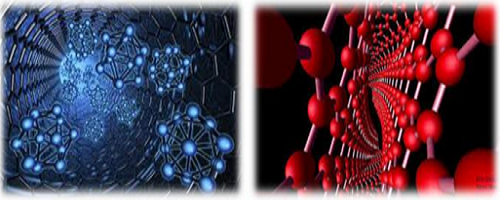| News Details |
Nanotechnology applications in the field of water purification
2024-02-29

Assistant Instructor Bara’a Yousef Hussein
Upper Euphrates Basin Developing Centre / University of Anbar
Nanotechnology has made tremendous progress in cleaner production technology, represented in reducing industrial waste, thus eliminating industrial pollution, improving the efficiency of using available economic resources, as well as working on the production of heat-resistant Nano plastic and oil products. Where environmentally friendly nanomaterials are used that react with ultraviolet rays, allowing the process of self-cleaning materials such as windows, and car glass, as well as the use of nanoparticles that work to get rid of pollutants and get rid of unpleasant odours such as the use of silver particles and titanium dioxide nanoparticles, and there are many applications for this wonderful technology in the field of agriculture, biology, engineering and other fields.
In the following, we will talk about the most important green environmental applications of nanotechnology in the future, which is the field of water purification:
Fresh water is about 3% of two-thirds frozen and the remaining 1% for global consumption (world supply), supplied globally, and today 1.1 billion people do not have access to safe water (healthy), and 2.4 billion lack a sanitation services system, 80% of diseases in developing countries are caused by polluted water ((sanitation). The demand for water increases with increasing population growth, and increasing per capita consumption, and two-thirds of the world is threatened with thirst by 2050 AC.
The global hydrological cycle has maintained the provision and purity of fresh water during the exchange of water between the ocean, the earth and the atmosphere by permanent recharge of groundwater, rivers and lakes, and this has generated a guarantee of water saving and purity, but the various human activities resulting from tremendous economic developments over a long time (industrial and agricultural activities, urban development, burning of fossil fuels) contributed significantly to water pollution and increased demand for it (water withdrawal increased during the period from 1900 to 2010 to more than eightfold). It has also led to a significant change in climate, increasing temperatures, rising sea levels, melting snow, and erratic rainfall, as precipitation has increased significantly in some parts of the world, causing rivers to flow and flood, while in others it has decreased, causing drought and desertification. Thus, water resources in many parts of the world have been affected and are becoming quantitatively depleted and further polluted, and the growing need for them can no longer be met and has become the main factor limiting economic development and population growth.
Over the past few years, there have been outputs of applied research that have led to the provision of several promising innovative solutions related to the field of nanotechnology and its current and future applications in treating environmental pollutants in water, soil and air and avoiding their recurrence.
One of the most important of these sciences and technologies qualified to provide new and innovative solutions to provide the required quantities of water by desalination of seawater, treatment of unfit water and removal of various pollutants from it and keeping it pure is nanoscience and technology that can be used in Nanofiltration and desalination, where Nanofiltration membranes are used to remove dissolved salts (desalination) from salt water (hard), remove micropollutants (arsenic and calcium) and soften water (remove calcium and magnesium ions). The treatment of waste, and in some uses the removal of biological contaminants such as microbes and viruses, as well as Nanocatalysts of various forms and types can be used to analyse organic pollutants and remove salts and heavy metals from liquids, and it is expected that we can use highly polluted and salty water for drinking and agriculture.
Magnetic particles are used to remove heavy metals such as arsenic, salts and organic compounds from water, and Nanosensors. It has evolved to be used to detect chemical and biological contaminants and analyse water on the spot without the need to take samples for analysis in laboratories, and works to monitor and maintain water pure, some many scientific institutions and companies have started working on the use of nanotechnologies in desalination or treatment, removal of pollutants from it, recycling, monitoring and keeping it pure.

Nanotechnology plays a role in detecting pollution at the molecular level and is a significant development in filtering systems, we list some uses of nanotechnology in the following:
1- Nano-designed membranes will lead to more efficient water purification processes, especially for energy consumption in technology (reverse osmosis).
2- Applicable coatings from nanomaterials reduce BLO film fouling, a problem with membrane technologies.
3- Experiments using palladium-doped iron have shown the possibility of eliminating organic pollutants in groundwater.
4- Various nanocomposite metal oxides can eliminate biological toxins in water through photocatalysts and oxidation.
5- Black iron oxide nanoparticles (magnetite) have been shown to remove arsenic from water.
6- There are studies of the use of some nanomaterials, such as iron particles, to convert heavy metals, such as lead and mercury, into an insoluble form.
7- Nanosensors have been used to detect metals, biological toxins and organic compounds accurately and quickly, and these devices can operate through a precise control system to detect and treat contamination.
In conclusion, we list the most important recommendations for you:
1- Cooperating with all research and scientific bodies in Arab and foreign countries to learn about the latest developments and developments related to the applications of nanotechnology in the environmental field.
2- Designing curricula on nanotechnology and its applications in the field of environment.
3- Organizing weekly or monthly workshops to support the role of nanotechnology in the environmental field in Iraqi universities, through which the latest international and Arab research in this field is discussed.
4- Activating the use of nanotechnology and its applications in solving energy problems in Iraq (through the use of solar energy cells) and water (the use of nanotechnology filters to desalinate seawater, groundwater and wells as alternative water sources - reuse of wastewater in agriculture and irrigation works).
#university_of_anbar
#Upper_Euphrates_Basin_Developing_Center









